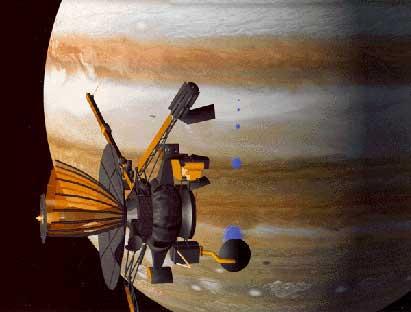Latest works by Galileo

The Galileo probe, spaced by NASA in 1989, has been investigating since 1995 Jupiter and its large satellites, Io, Europe, Ganymede and Calisto. NASA has completed its works and announced its destruction against Jupiter in September 2003. In total there have been 14,000 photographs taken, Galileo and has given rise to numerous discoveries.
January 17 has passed 100 kilometers from Io, taking very close photographs and taking advantage of the momentum of its gravity, to go to Jupiter. Galileo has made 33 turns to Jupiter, has been seven times near Io and, in total, 27 times around Europe, Ganymede and Callisto. Periodically, those responsible for the mission took advantage of the gravity of the satellites to change the route of the boat to the next destination. But the fuel needed to put its antenna to Earth is about to run out and NASA researchers don't want the ship to run out of control. And they don't even want to give you the minimum chances of falling into the satellite Europe.

Thanks to Galileo, scientists have discovered that under the ice sheet of Europe there is a liquid ocean of salt water and want to keep Europe clean for future research. That is why he is taken to Jupiter to be destroyed in his atmosphere.
But before its destruction against Jupiter, Galileo first visits Amaltea, a small satellite inside Jupiter, and then analyzes the storms of Jupiter. Until the last moment, therefore, he will continue to work.
Scientists are a bit sad because Galileo's work will be finished, but it has been in operation three times more than expected and has suffered the violent radiation of Jupiter much more than expected.
On the NASA website you will find all the information about the Galileo mission.
Buletina
Bidali zure helbide elektronikoa eta jaso asteroko buletina zure sarrera-ontzian











